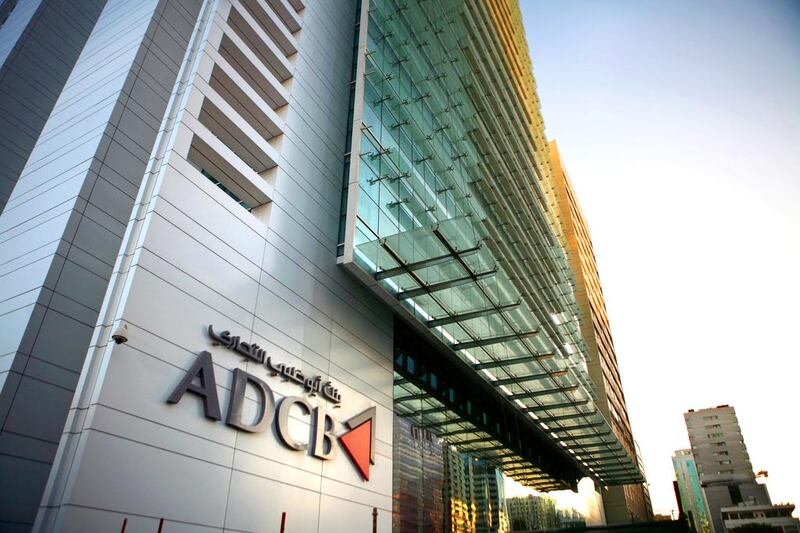Since the global financial crisis, banks worldwide have struggled to rebuild balance sheets with a focus on openness and risk management strategies. One surprising success story comes from the Middle East, a region where corporate governance is still in its infancy.
Despite the support of massive oil revenues, UAE banks were not immune to the tidal impact of the United States sub-prime mortgage fallout. In 2008, after a period of incredible growth, the Abu Dhabi Commercial Bank (ADCB), the country's third largest lender, suffered a spectacular setback.
How it pulled itself out of the quagmire of bad loans and high-risk investments is a lesson for financial institutions everywhere.
When it was formed in 1985 from the merger of three “stressed” government-owned banks, ADCB, like many financial institutions around the world, viewed risk as second to the mantra of “let’s just grow!”.
Opportunities abounded across the fast-growing, oil-rich region. And ADCB – a listed firm that is 58 per cent-owned by the Abu Dhabi Government, with a reputation for innovation and strong service – saw earnings surge almost five-fold between 2003 and 2007, while returns on equity and assets doubled.
But by the third quarter of 2008, it became the clear the days of easy money were over. The global financial collapse hit hard and fast, losses replaced profits and the bank’s share price tumbled as its overstretched loan book overflowed with high-risk investments.
“The next four years saw an equally incredible turnaround in which it quickly stemmed its losses and achieved a new growth spurt,” Stephen Mezias, a professor of entrepreneurship at Insead, notes in a recent case study.
The bank’s success, he says, can be largely attributed to its leadership team who kept calm under stress, led by example and refused to cut corners.
Ala’a Eraiqat, ADCB’s deputy chief executive when the crisis hit, took over the top job in 2009. By focusing on core competencies and a level of transparency previously unheard of in the region, he steered the bank through the most turbulent period of its young life.
“Being a leader in transparency and governance and risk management put them at least temporarily at a disadvantage to some of their competitors who, for example, continued to try and present their loan books as if they were far better than they were in reality,” says Prof Mezias.
Mr Eraiqat believed in openness within the bank as well, and began by taking action to ensure that every employee was aware of the crisis and of each hard-won success that came from the turnaround effort.
There were regular presentations to analysts, credit ratings agencies and to the bank’s board.
The emphasis on the introduction of corporate governance was welcomed and supported by a mutual conviction between the board and management that this was pivotal to the bank’s ongoing recovery.
Also pivotal were its staff. The bank had cultivated human capital since 2003, recruiting and training large numbers of skilled people. They were, as Prof Mezias notes, among the bank’s most valuable assets.
“To demonstrate their conviction that results come from people, they made a commitment to every staff member that no-one would be fired on account of the crisis,” he says.
Instead, attrition was used to reduce labour costs and for months after the crisis, departing personnel were not replaced.
Those that stayed were immersed in ADCB’s new climate and culture which insisted that all staff contribute by identifying cost-cutting measures and expanding the search for new sources of deposits.
But the savings and a demonstrated growth in income had little impact against the huge defaults in entities like Global Investment House, Saad, Al Gosaibi and two, now insolvent, Kazakhstan banks in which ADCB had equity in.
In 2009, ADCB posted a net loss of Dh500 million.
“The top management team worked to ensure that the new conservatism that had allowed them to survive the crisis could be turned into a long-term strategy for growth,” says Prof Mezias.
That the board and the Abu Dhabi Government had the patience to support them and take the long view, gave Eraiqat and his team the freedom to focus on a three-year strategy. “Shoring up the defences that had permitted record operating income in 2009 was the first order of business. Ongoing reinforcement of very conservative financial policies and a low-risk appetite culture was crucial,” says Prof Mezias.
The new strategy focused on four areas: growth, stability, service excellence and risk management.
The bank continued to invest in training its people and made the vital decision to pursue growth and stability in the domestic market – local businesses and consumers.
“Competitors such as Citibank or HSBC were able to come in with their private banking divisions and siphon off some of the wealthiest Emiratis – those who want to be able to move their money very easily in and out of the country. So ADCB didn’t go after that segment, but they certainly went after credit cards and the micro businesses. The small and medium support firms for the petroleum sector were all targeted as ADCB customers,” he says.
The strategy worked. While the economic conditions remained challenging, the bank posted a 2012 full-year net profit of Dh2.8 billion.
“The ADCB case study,” notes Prof Mezias, “is a powerful demonstration that success, wherever you are, is often transitory, that effective leaders are those who respond quickly and decisively to crises, and that creating the systems to reverse performance declines often involves perspiration as well as inspiration.”
Jane Williams is the editor of Insead Knowledge Arabia





